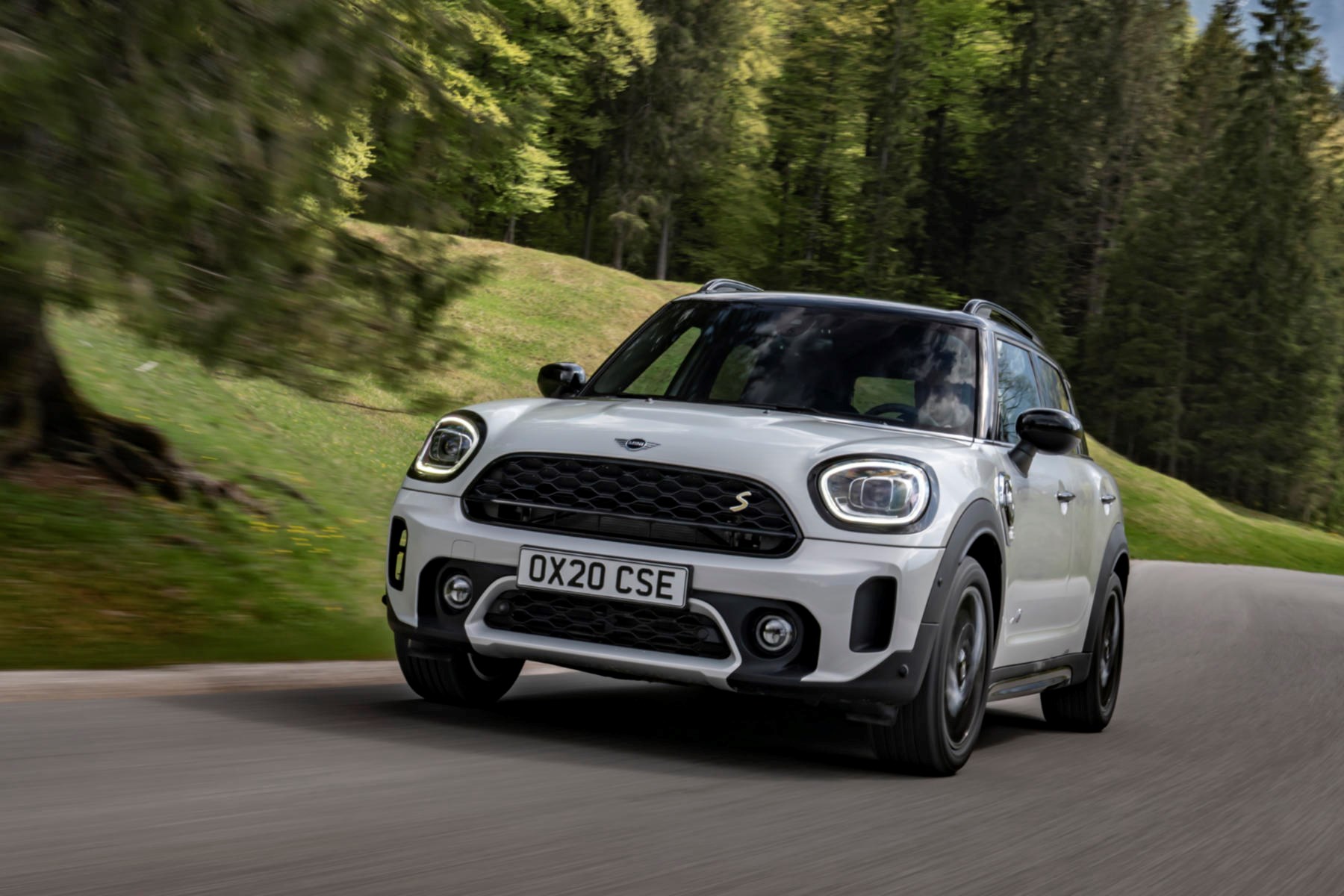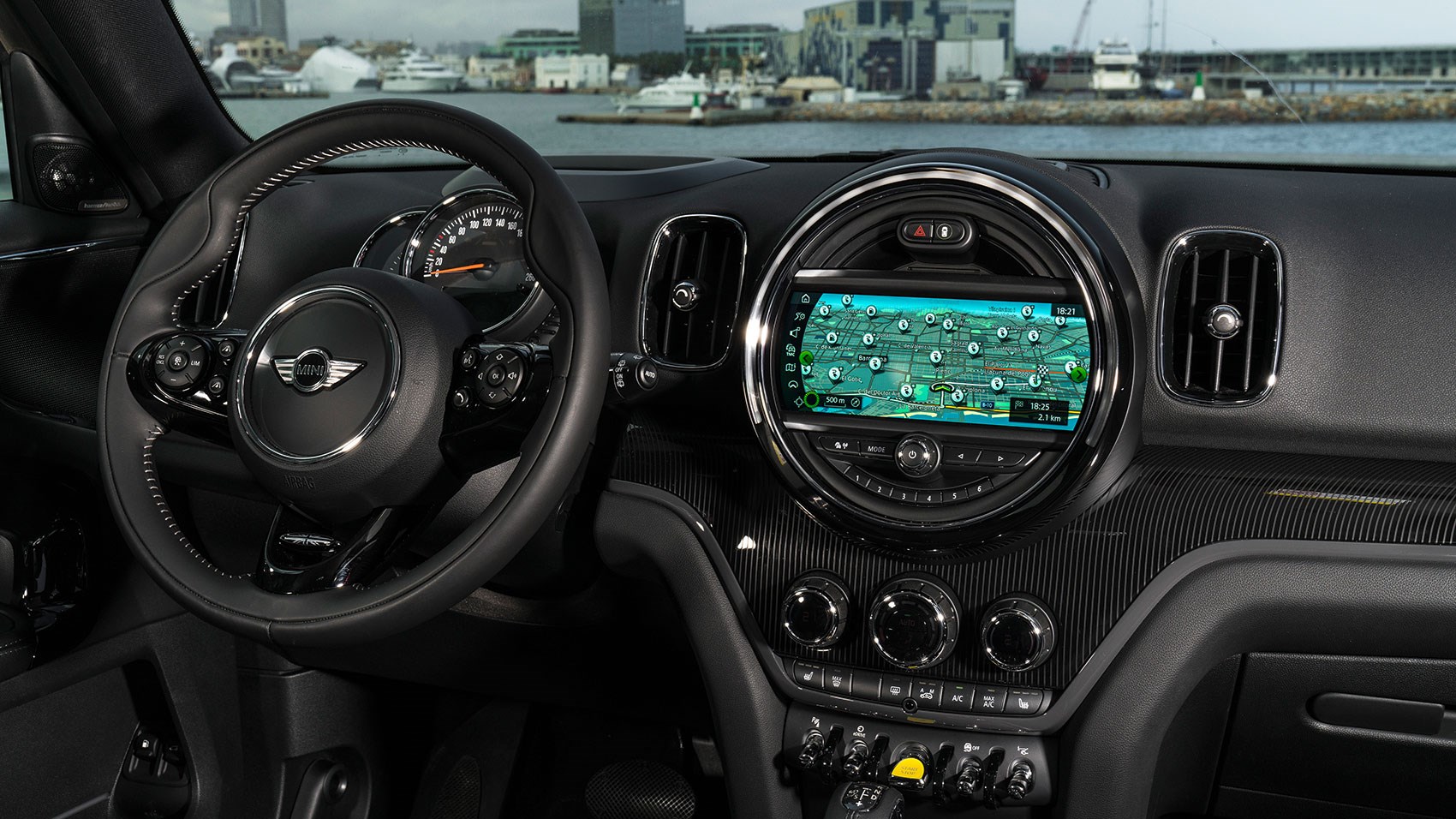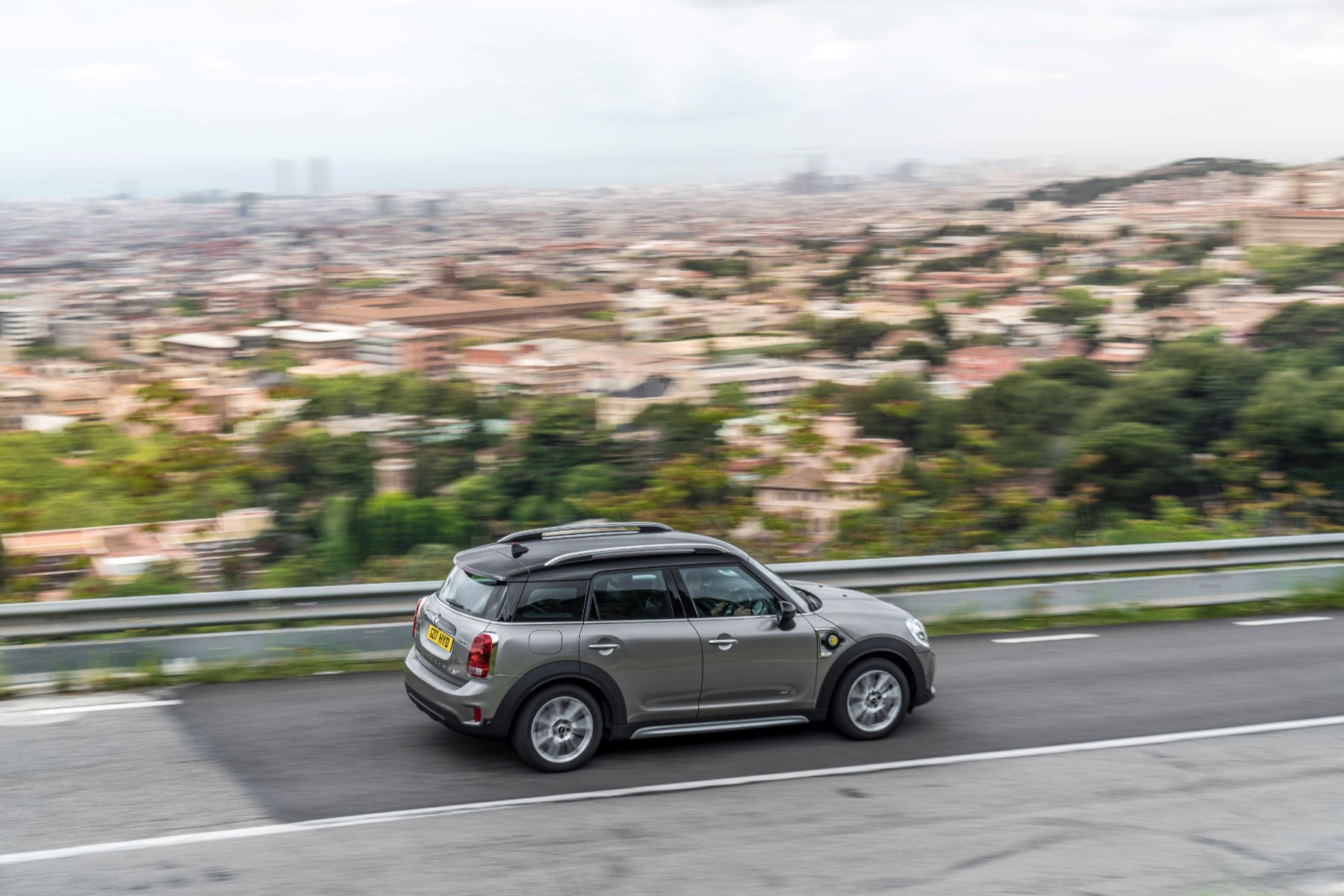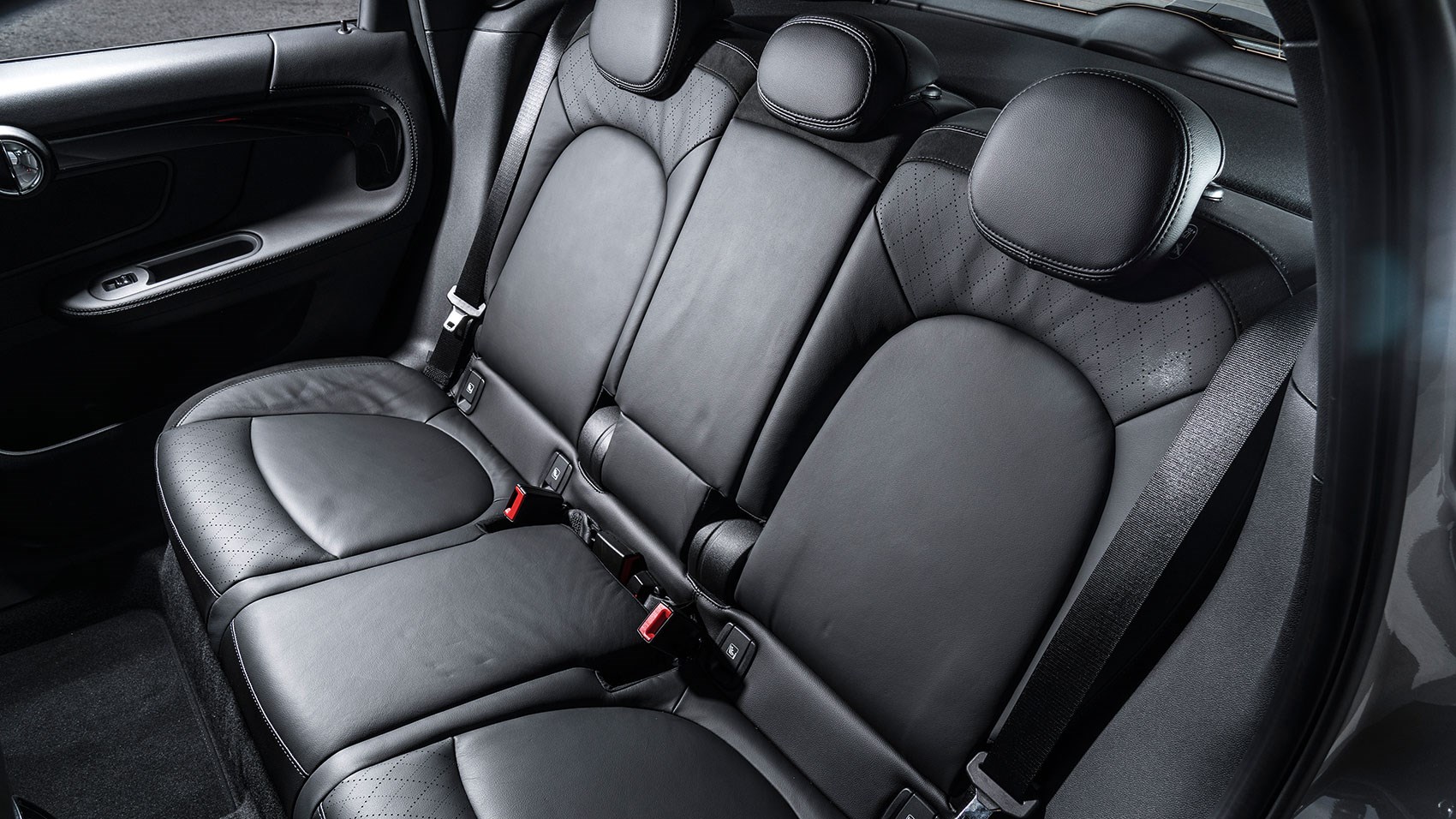► Mini’s only plug-in hybrid
► SUV shape meets EV goodness
► Countryman prices start from £34,500
It might surprise you to learn that the Countryman is still, five years after it arrived in 2017, the only Mini to be offered as a hybrid. Since then we’ve seen the introduction of the all-electric Mini hatchback as the company’s second electrified offering, yet no subsequent hybrids.
But that isn’t to say the Countryman Hybrid was a misstep. Because with much of its drivetrain borrowed from the BMW 2-series Active Tourer hybrid, it makes for a good compact SUV with the strong efficiency you’d expect from a plug-in. When driven (and charged) as intended, of course.
The Countryman offers a claimed electric-only range of between 29.2 and 31.7 miles, and the motor is joined by a 1.5-litre three-cylinder turbo engine. This, along with regenerative braking, helps top-up the battery on longer drives, or it can be completely filled after a few hours on a charger.
This approach to driving, Mini says, provides a guilt-free, zero-emissions drive across town, but with the long-distance cruising ability to stretch the Countryman’s legs for a weekend packed with lifestyle activities. Just like those families you see in car brochures.
Minis are nimble and fun, hybrids heavy and slow, right?
There’s plenty of truth in those generalisations, and the Countryman PHEV is indeed heavier – by around 150kg – than its equivalent, a Cooper with the same 134bhp three-pot, auto ‘box and four-wheel drive. But the PHEV is punchier and much quicker, thanks to its electric assistance.

Mini has tucked 80 lithium-ion battery cells under the back seat, plus an 87bhp electric motor which drives the rear axle via a single-speed transmission. Up to 122lb ft of torque can spin up the rear rubber: in fact, the plug-in hybrid Mini is a rear-wheel drive car when operating in purely electric mode.
And that’s how we started our PHEV test drive: in ‘MAX eDRIVE’ mode, good for pure electric driving, unless you exceed 77mph or mash the throttle through the floorpan. That takes a concerted press and it feels as if the Mini had a doorstop wedged under the pedal to keep us pure.
The Countryman displays all those EV virtues: fast acceleration (0-62mph in 6.8secs) accompanied by a slide whistle sound effect, blissfully quiet urban progress unencumbered by tyre, wind or combustion noise. Mini has made the brakes feel progressive and satisfying; not always a given in a hybrid, where the initial ‘regenerative’ phase can feel heavy-handed before the friction brakes kick in.
But after just eight miles of rolling launches and zero emission nipping through Barcelona’s twisted roadscape, the petrol-powered front wheels insist on joining the fray. Although product chief Daniel Schmidt vows he gets 15 to 18 miles of EV range in Munich.

When MAX eDRIVE is exhausted, the Mini defaults to the second of three modes: ‘AUTO eDRIVE’. Here, the petrol engine with its bassy three-cylinder petrol thrum and the humming electric motor take it in turns or work together under heavy load; like DJ Carl Cox mixing on four turntables, it’s intricate, smooth and sweeps you along.
There’s a third hybrid drive mode, ‘SAVE’, also chosen with a switch beside the mustard yellow start button, which either preserves the electric charge for an upcoming low emissions zone, or uses the engine to charge the battery.
Does it feel like a true Mini?
The PHEV Countryman is a very rhythmic, fun car to drive. Although you feel the electric kit’s additional weight under hard braking, it doesn’t impact the Mini’s cornering ability. It carves sweetly through bends, resisting body roll, at times feeling like the rear-drive unit is behaving like an e-diff and swivelling you into corners. Unlike many four-wheel drive SUVs which are strictly front-drive unless slip is detected, the Mini is continually deciding whether to push or pull you – or spin both axles concurrently.
The engine is coupled to a crisp, six-speed Steptronic automatic; that avoids the bovine flaring of revs that has historically hobbled the complex, CVT-equipped hybrids from Lexus and Toyota. There’s an additional e-power gauge stuck to the central speedometer where the tacho normally resides, to help keep you on the EV straight and narrow.
If the needle’s in the yellow, you’re running on electric; accelerate too hard (or pass 50mph in AUTO eDRIVE), and the pointer bangs into the eBOOST ceiling. Lift off entirely and it falls through the floor, into ‘charge’.
It’s a bit confusing when the crank is at a lowly 2000 revs yet you see the needle in a (virtual) redline position – you need to recalibrate to remember it’s the EV gauge. Even more detail is available via the central screen’s drive modes graphic, which shows if the Mini is running on petrol-powered front wheels, electric-powered rear wheels, both systems are working together in ‘power’ mode or neither in ‘charge’ mode. You might need a lie down afterwards. But it’s sophisticated and seamless, so let it get on with things.

The electric power assisted steering is laid back in normal mode, turning into corners too languidly. Use the driving modes’ toggle in the gearshifter housing to select sport and the steering becomes heavier and turns in more responsively. Combine that with the dual-motor’s punch – 0-62mph in 6.8secs, just a few tenths slower than the previous-generation John Cooper Works Countryman – and the PHEV feels as good to drive as the regular 2.0-litre turbo. Ride comfort is okay, and there’s a bit of wind noise during motorway cruising.
Hybrids are all about compromises: confess its sins…
The electric bits are stowed about the rear axle. First victim is the fuel tank, which shrinks from 51 to 36 litres: Mini claims the PHEV still offers a 310-mile range. Packaging the batteries beneath the rear bench means the seat squabs can’t slide back and forth as in normal Countrymans, though the back rests still recline. The boot also loses 45 litres of stowage, all beneath the false floor; total capacity is 405 litres, or 1275 with the rear seats folded.
So the Countryman PHEV is still a well-packaged, practical car, with sufficient space for adults in the rear. A full charge takes 3 hours 15 minutes on the mains, or an hour less using a Chargemaster wallbox. A charge rate of just 3.7kW means the Countryman Hybrid misses out on fast-charging, so you’ll be best plugging in at home each night, or seeking out streetside chargers for regular top-ups during the day.

Verdict
If you’re thinking the plug-in Countryman’s spec sounds familiar, then that’s because it is – it’s pretty much lifted wholesale from the BMW 2-series Active Tourer hybrid. But that’s an MPV, and the Countryman should be consumer catnip with its SUV bodystyle.
The Mini Countryman PHEV is the real deal and is a serious contender for those wanting a zero-emissions runaround and a lifestyle vehicle. To a great degree, the car’s success is because it has the same virtues as a regular Countryman: a high-quality interior, character in spades and trademark BMW connectivity, including Apple CarPlay as standard with all trim levels.
And most importantly, it’s still great fun to drive with decent performance. But the plug-in capability gives the Countryman a dual nature: it’s also a very civilised and responsible urban runabout, when running in zero emissions electric mode. The Countryman PHEV offers the best of both worlds.
More Mini reviews by CAR magazine
View Mini Countryman Hybrid lease deals